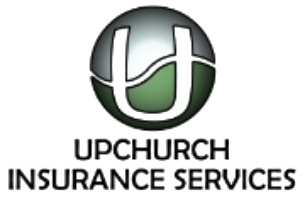Medicare Part D, also called the Medicare prescription drug benefit, is a United States federal-government program which subsidizes the costs of prescription drugs and prescription drug insurance premiums for Medicare beneficiaries. It was enacted as part of the Medicare Modernization Act of 2003 and went into effect on January 1, 2006. Part D plans are administered through private insurance companies.
Late Enrollment Penalty
Medicare Part D is available to Medicare beneficiaries who do not have credible drug coverage (Most generally, VA or employer coverage.). Beneficiaries who do not have credible prescription drug coverage must sign up when they become eligible in order to avoid a late enrollment penalty. The late enrollment penalty is 1% of the average national premium, which in 2015 is $33.13, for every month there was no coverage. This premium is adjusted every year, is added to your monthly plan premium and is payable for the rest of your life.
Here is an example of how this premium is calculated for someone who went one year without Part D coverage:
.12 (12% penalty – 1% for each month not covered) × $33.13 (2015 base beneficiary premium) = $3.97
$3.97 rounded to the nearest $0.10 = $4.00
$4.00 = monthly late enrollment penalty for 2015
Standard Part D Benefits, 2015:
Phase 1- Deductible: $320
Phase 2 - Initial Coverage Phase: The Enrollee pays 25% of drug costs and the plan pays 75%.
Phase 3 – Coverage Gap (Doughnut Hole): The Gap is hit once the Enrollee and the Plan have made COMBINED payments of $2960. Once this ceiling is met the Enrollee pays 45% for brand-name drugs and 65% of generic drugs; the Plan pays 5% and 35% respectively.
Phase 4 – Catastrophic Coverage: This phase begins once the Enrollee and the Plan have paid a COMBINED $7062 in estimated total drug costs. Once this ceiling is hit the Enrollee pays 5%, the Plan pays 15% and Medicare pays 80%.
These benefits ‘reset’ each January 1; and the benefits described above will also change each year.
One of the provisions of the Affordable Care Act (Obamacare) will eliminate the coverage gap by the year 2020; meaning that every year between now and then, beneficiaries will pay less during the ‘doughnut hole’. By the year 2020, Part D participants will pay 25% of both brand name and generic drug costs, as compared to the 45% of brand names and 65% of generic costs being paid in 2015.
How to Transition into Part D and Save on Drug Costs
Prescription drug costs can be the highest monthly expense for many Medicare beneficiaries. We talk to many seniors who are having to make real decisions about whether they should pay for their prescriptions or buy groceries or pay utility bills. Some are foregoing filling their prescriptions all together due to costs, and jeopardizing their health.
Here is a list of actions you can take to help keep drug costs to a minimum:
1. Schedule an appointment with your doctor to review all of your prescription drugs. Today, people are being prescribed drugs by more than one doctor. Specialists and other health practitioners are often involved, and it is important that your regular family doctor is aware of every drug you are taking. This review will allow your doctor to be sure you aren’t taking duplicate medications.
2. New generic drugs come to market almost every day! Your doctor can determine whether there are generic drugs or lower cost brand name drugs that can replace some of the pricey brand name drugs.
3. Utilize the plans’ Mail Order Pharmacies, which typically offer lower copayments and the convenience of delivering prescriptions right to the door.
4. Take advantage of the FREE preventive screenings each year. Prevention is where our health care system is moving; and getting a hold of risk factors today will reduce future treatment costs.
5. For Medicare beneficiaries who meet certain monthly income and resource qualifications, there is extra help available. In 2015, you may qualify if you have up to $17,655 in yearly income ($23,895 for a married couple) and up to $13,640 in resources ($27,250 for a married couple). This program provides significant savings; and if you meet the qualifications, it definitely makes sense to apply. You may even apply online: http://www.ssa.gov/medicare/prescriptionhelp/
The Future of Prescription Drug Costs
Unfortunately, recent news is that both brand name and generic drug prices are soaring out of control.
The effects of this, according to AARP, will result in higher copayments for Medicare beneficiaries causing many to not be able to fill their prescriptions (Experts believe that currently 25% of all prescriptions are not being filled due to high cost.). Taxpayers also take the hit for rising drug costs, as government programs (Medicaid and Extra Help, as described above.) now foot the bill for half of all prescription drugs.
This makes it increasingly important for Medicare beneficiaries to continue the discussions with their health care providers about the prescriptions they are taking; as well as being sure to review their Part D plans each year during the annual open enrollment period, either with their insurance agent or through the Medicare Plan Finder.
